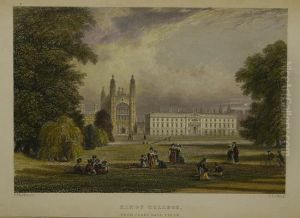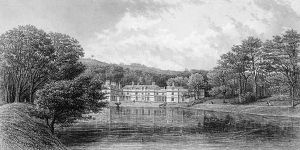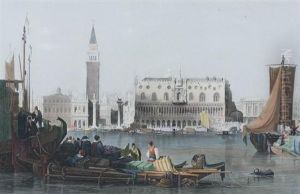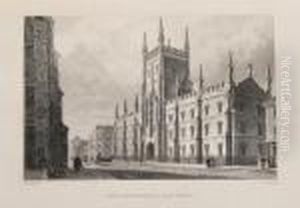John Henry Le Keux Paintings
John Henry Le Keux, born in 1812, was an esteemed English engraver, known for his contribution to the field of architectural engraving during the 19th century. His work played a significant role in documenting and preserving the architectural heritage of England during a period of rapid change and industrialization. Le Keux's engravings are celebrated for their precision, detail, and the ability to capture the essence of architectural designs, making them invaluable resources for historians and architects alike.
Le Keux's most notable period of activity spanned the mid to late 19th century, a time when the demand for illustrated books and periodicals was at its peak. His collaboration with prominent architects and historians of his time, including John Britton, resulted in the production of some of the era's most influential works on English medieval architecture. One of his major contributions was the illustrations for 'Oxford and Its Colleges,' which provided an in-depth look at the architectural beauty of Oxford's educational institutions. This work, among others, helped to foster a greater appreciation for Gothic architecture and contributed to the Gothic Revival movement.
Throughout his career, John Henry Le Keux was involved in various significant projects that required a deep understanding of architectural detail and the ability to translate these details into engravings that were both accurate and aesthetically pleasing. His engravings served not only as works of art but also as important historical documents, capturing the appearance of buildings and landscapes that, in some cases, have since been altered or no longer exist. Le Keux's dedication to his craft and his contributions to the field of architectural engraving have left a lasting legacy that continues to be appreciated by scholars and enthusiasts of architectural history.
John Henry Le Keux passed away in 1896, leaving behind a rich body of work that continues to be studied and admired. His engravings can be found in numerous publications and archives, serving as a testament to the skill and dedication of one of the 19th century's foremost architectural engravers. His legacy is not just in the beauty of his work but also in the way his engravings have preserved a visual record of England's architectural heritage for future generations.



